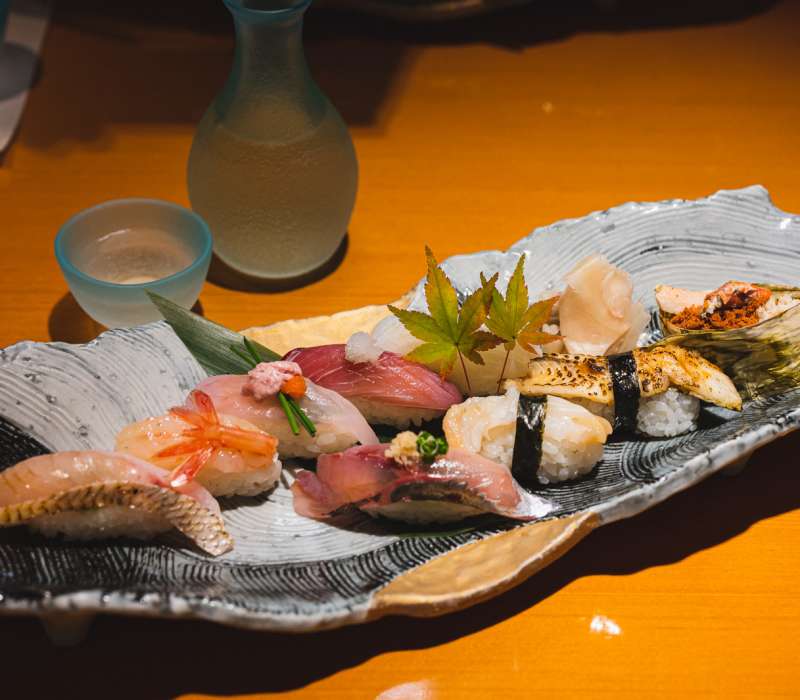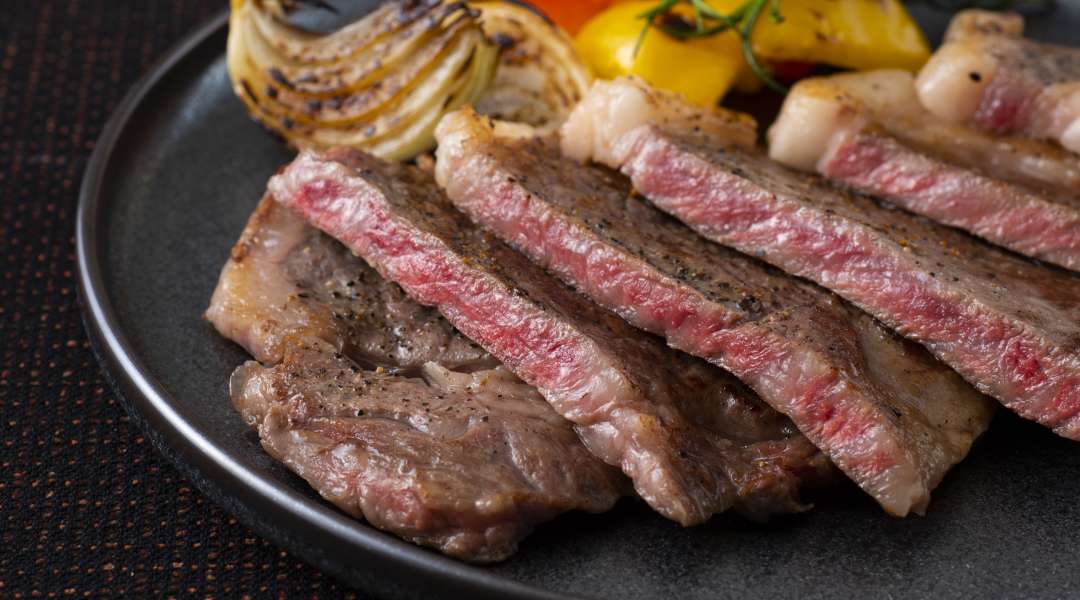
If you’ve been on holiday in Japan, you know exactly what we're talking about. Author Michael Booth brought his wife and sons on a three-month holiday to Japan with the sole purpose of enjoying the breadth and depth of the country’s remarkable cuisine, inspiring countless others to follow in his footsteps. There is something about Japanese cuisine that is so simple and elegant, yet once it sinks its hooks into us, it never lets us go.
Culinary experts have remarked upon this, too. The late Anthony Bourdain proclaimed, “Japan is endlessly, endlessly interesting to me,” and added about Tokyo “If I had to eat only in one city for the rest of my life, Tokyo would be it…Tokyo is deliciously unknowable.” Indeed, if you ate lunch and dinner at a different restaurant in Tokyo every day for 50 years, you would still have over 100,000 restaurants left to conquer. And if you measure restaurant quality in Michelin stars, Tokyo outpaces every city in the world, with Paris as a distant second.
What is it about Japanese cuisine that compels people to travel thousands of miles from around the globe to come and eat a simple slice of raw fish on rice, a bowl of noodles in broth, or a cut of beef that must be measured in grams? One can argue that it is the freshness of the food in Japan, but in this modern age you can get fresh food nearly anywhere. In Japan, various regions are fond of claiming it is the purity of the water that makes Japanese food so delicious, and while Japanese water is indeed quite delicious, it is a claim that is little more than a bit of creative marketing.
Stripping away the superficial ideas people have about Japanese food, we offer some theories on the irresistible appeal of Japanese cuisine.

The Variety of Ingredients and Preparation Techniques
Perhaps in our minds we have oversimplified Japanese cuisine; after all, sushi is not simply a slice of fish over rice. It can be a near infinite variety of types of seafood, from the iconic maguro tuna to the exotic shirako cod milt. It can be raw, fried, boiled, grilled, pickled, or torched. Japan is a nation surrounded by sea, but not just one sea. The Pacific Ocean, the Sea of Japan, the East China Sea, even the Seto Inland Sea each have their own climates and ecosystems, which is why the variety of seafood in Japan seems endless. And the microclimates, geographical attributes, and histories of various regions of Japan also contribute to the variety of food preparation. Consider narezushi, the oldest known form of sushi in Japan. Narezushi is made by salting and fermenting mackerel for a year, the way fish was safely transported from the coast of northern Kyoto to the inland capital before refrigeration was invented. Today, visitors can eat at restaurants ranging from pricey sushi bars with a half-dozen seats to semi-chaotic conveyor belt sushi restaurants, each serving seafood from all over Japan prepared in countless ways. It is hardly a surprise that some hardcore visitors eat sushi every day during their holiday in Japan.
Still, the most famous of Japanese ingredients for overseas visitors is probably wagyu, which simply means Japan-raised beef. Although often referred to as “Kobe beef”, Kobe produces just one of dozens of types of wagyu, and the fact that it is the best known overseas is mainly the result of a successful marketing campaign, and not the superiority of Kobe beef over other beef in Japan. In fact, in Japan’s own “Wagyu Olympics,” held every 5 years since 1966, it is Miyazaki beef from a prefecture of southwestern Japan hundreds of miles from Kobe that has been dominating the last 3 events. The competition measures not only the most visible beef quality in the level of marbling between the fat and the meat, but also the taste of the meat which is influenced by the cattle’s diet. It goes without saying that beef at this level is receiving a diet free from additives and antibiotics.
When visitors come to Japan for a meal of wagyu, they often head straight for the most obvious choice in their minds: a restaurant serving wagyu steak, where they order what seems like a reasonably sized portion. If you try this, however, you may quickly find yourself with a bloated stomach and a thin wallet. Japanese tend to enjoy their wagyu in moderation, as thin slices grilled piece-by-piece at your table in a yakiniku restaurant, interspersed with grilled vegetables, less expensive cuts of meat, and side dishes. Or more elegantly as thin slices of heaven in a slightly sweet bowl of sukiyaki, or swished lightly in delicate shabu shabu hot pot broth.
Even the humble bowl of ramen, the everyman’s meal of noodles, broth, and a few toppings has a multitude of varieties based on broth type, noodle size, and topping variety. As ramen has ever-evolved to suit the dynamic culture of Japan, even these are still constantly changing. Recent trends have been toward tsukemen, which uses a heartier noodle with a more viscous broth. Rather than served in broth, tsukemen comes with the noodles on the side which are dipped into the broth as you eat. Tsukemen broth tends to be richer in flavour and the meal in itself more satisfying with its larger serving of noodles. Still, it is possible to find ramen of all types in Tokyo alone, from the always popular Hakata-style ramen with thin, straight noodles in a clingy thick pork bone broth to the thicker curlier noodles in the Hokkaido-style miso ramen topped with a pat of butter and a spoonful of corn kernels.
And what about the alcoholic beverages of Japan? Sake is one of the products that benefits from the “it’s in the water” marketing campaign, but perhaps this idea rings a bit truer for sake than other foods. After all, pure water is not only the basis for good sake but also high-quality rice which is the second-most important ingredient in sake brewing.
Still, sake is brewed in every prefecture of Japan, and all make the same claims about the water and the rice, and even prefectures not known for the quality of their rice can easily have rice shipped to them from other regions. So what is it that sets one region’s sake apart from another?
The taste of sake is set by the toji, the brew master of a particular brewery or group of breweries. Whether the toji adheres strictly to traditional values and techniques in sake brewing or is more willing to experiment with new techniques and ingredients is the main factor in the flavours of a brewery’s sake. Generally (and very generally at that), the north-eastern parts of Japan tend to have toji who are more strictly traditional in terms of maintaining the flavour of their brewery’s sake while those in the southwest are more willing to push the boundaries. But the truth is that both time-honoured and innovative sake brewing is happening in breweries all over Japan, and the true connoisseur knows they need to dive a bit deeper than regional generalities to discover them.

The Traditional Flavours of Japan
Within the various types of the most popular Japanese meals, you can find a huge variety of ingredients and preparation techniques, but how do we account for the fact that nearly every type of food made in Japan seems to have been customized to our taste buds by magic food fairies? Looking closely, it isn’t magic at all, but something that has been in the making for hundreds, even thousands of years.
In Japanese cuisine, there are a handful of key ingredients which have changed very little over the centuries. Soy sauce. Miso. Rice vinegar. Dashi. And a few more.
I’ve had the privilege of staying in several farm stays in rural Japan, where sleeping quarters are an extra room in the farmer’s house and the restaurant is the dining room table where a home cooked meal has been lovingly prepared for the honoured guests. Often, these were the simplest of meals: meat or vegetables simmered in, basted and grilled with, or seasoned with one or more of these ingredients. And yet the memories of these meals linger years later.
But just because the basic flavours of Japanese cuisine are simple doesn’t mean they aren’t complex. Although dashi is a stock made from the combination of boiled konbu kelp and dried flakes of bonito, the flavour itself is so complex that it is difficult to accurately describe it. Many people describe dashi as the flavour of umami, the sixth flavour.
Soy sauce is an ingredient that came from China but evolved to become quite different from its origins. While fewer soy sauce breweries are still preserving the traditional ways of barrel aged brewing with fermentation periods from one to five years, you’ll certainly recognize the difference in the complex layers of flavour found in a higher quality soy sauce.
It is in fact this regional quality of traditional Japanese ingredients that creates such a variety of gastronomical experiences across Japan. The methods and ingredients of producing these key ingredients may not have evolved over time, but they certainly evolved with the regions. Travel to western Japan and the cuisine becomes sweeter, a result of the fact that western traders brought knowledge of sugar cultivation to this part of Japan in the 16th century and that sugar found its way into ingredients like soy sauce.
Miso is another example of a key ingredient with regional differences in Japan. The flavour of miso can vary greatly from sweet to salty, influenced by the ratio and types of grains to soybean content, the amount of koji (a fermentation catalyser) added, and the fermentation period. This creates opportunities for even simple dishes like miso soup to be dramatically different, from the pungent and salty dark miso of the Tohoku region which has a high fermented soybean content, to the pale, almost sweet miso of the Kansai region laden with rice koji.

Japanese Food for Vegetarians
One of the conundrums that has troubled vegetarians and vegans visiting Japan is the difficulty in finding cuisine for specific dietary needs. For vegans especially, the ubiquitous presence of dashi tends to be problematic, although vegan alternatives to standard dashi using shiitake mushrooms in place of bonito are becoming more available. As international visitors to Japan have skyrocketed in the past decade, many restaurants are also making their list of ingredients available to customers with dietary restrictions.
There is one group of people vegetarians and vegans can turn to for a dependable animal-free meal in Japan: the Buddhist monkhood. Shojin ryori is the name of the simple cuisine consumed daily by Buddhist monks that is completely plant-based. While tofu is a delicious staple of shojin ryori (and eating fresh tofu in Japan is an experience not to be missed), it also uses various types of wild plants and unique preparation methods that can practically simulate the texture and flavour of meat and fish. A famous temple in Hamamatsu, Shizuoka, for example, makes a plant-based version of the region’s specialty, grilled eel basted in sweet sauce, that looks and tastes like the original.
But among Tokyo’s 130,000 plus restaurants, vegan cuisine is never too far away, even if it isn’t strictly Japanese food. And for those who don’t mind eating seafood, the choices remain practically endless for the average traveller.
For some visitors to Japan, meals are the sustenance between sites of natural and historical beauty and for others the very reason for being here. Whether you come to Japan for the food or are just enjoying it as another unique experience, remember one thing: when in Japan, make every meal count.



























































